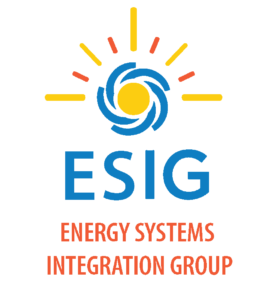Distributed energy resources (DERs), especially rooftop photovoltaic (PV) generation, have made significant penetration at the distribution system level in many parts of the world. In certain solar-resource rich regions like Arizona, this penetration at the distribution system level has created new operating challenges. This provides opportunities for efficient control of distribution system voltage, provided that the PV inverters adhere to the new standards proposed in the IEEE Standard 1547-2018.
Over Voltages and Reverse Power Flows in Spring, Low Voltages in Summer
 Seasonal load and solar insolation patterns significantly impact feeder performance. In Arizona, the residential loads during the spring months are very low, while, with the moderating temperatures and high solar insolation, the PV cells produce maximum output. This combination of low load and high rooftop PV generation results in significant over voltages on the feeder for extended periods during the day. This high level of PV output coupled with the low load conditions also results in large reverse power flows into the sub-transmission system that supplies the feeders. The over voltages and reverse flows pose a significant operating challenge to distribution system operators. In contrast, during the summer months when the load on the feeders is very high, and the PV solar output drops due to high temperatures at the cell surface, low voltage becomes an important concern.
Seasonal load and solar insolation patterns significantly impact feeder performance. In Arizona, the residential loads during the spring months are very low, while, with the moderating temperatures and high solar insolation, the PV cells produce maximum output. This combination of low load and high rooftop PV generation results in significant over voltages on the feeder for extended periods during the day. This high level of PV output coupled with the low load conditions also results in large reverse power flows into the sub-transmission system that supplies the feeders. The over voltages and reverse flows pose a significant operating challenge to distribution system operators. In contrast, during the summer months when the load on the feeders is very high, and the PV solar output drops due to high temperatures at the cell surface, low voltage becomes an important concern.
The high PV generation on the feeder, combined with the large reverse flow at certain times of the day (which could be as high as 3 MW in certain feeders), requires a careful re-examination of the protection settings on the feeder and on the sub-transmission system. A typical single-line-to-ground fault on a single phase of the feeder during these periods of high PV output could cause low voltages on that phase and result in inverters tripping. In underground feeders with the main trunk being cables, the mutual impedance between phases is high. As a result, high voltages occur in the non-faulted phases. In certain instances, inverters on the non-faulted phases could trip due to over voltages. As a consequence, there is significant unbalance in the feeder. If the PV penetration is very high on the feeder, it could trip the ground fault relay and result in an outage of the feeder. The analysis of such probable conditions and a careful re-examination of the protection settings is essential to ensure reliability under such conditions. This type of analysis would also require an integrated transmission and distribution system simulation where the sub-transmission and portions of the transmission system would need to be represented and analyzed in an integrated fashion with the distribution system.
The Path Forward Using Controllable Four-Quadrant Inverters
The problem of controlling voltage along the feeder, both during over voltage and low voltage conditions, could be facilitated if the rooftop PV inverters were all controllable four-quadrant inverters. In either condition, the inverters could be appropriately set to control the voltage by either absorbing reactive power during over voltages or by supplying reactive power during low voltages. The ability to provide control locally from electrically close rooftop PV units significantly enhances the efficacy of the control over a range of voltages. Figure 1a below shows the voltage profile at various residences along the feeder during a high solar insolation day with the inverters operating at unity power factor. Significant over voltages occur at several locations even with all the capacitors on the feeder turned off. Figure 1b illustrates the impact of volt/VAr control at a set of optimally chosen inverters at the same operating condition. The efficacy of the volt/VAr control to reduce the over voltages can be clearly observed.

Figure 1. Voltage profile at residences along the feeder with (b) and without (a) volt/VAr control. (Source: Vijay Vittal, used with permission)
With most electric distribution utilities around the world transitioning to an automated metering infrastructure, the data obtained can be effectively used to tune the distribution system model, which can be verified by comparison with the measurements. The refined model can be effectively used to conduct analysis and also examine control actions associated with DERs. Such equipment capabilities and the models to study them will become increasingly important as distributed PV becomes increasingly prevalent in distribution systems.
Vijay Vittal
Regents’ Professor
Arizona State University

Leave a Reply